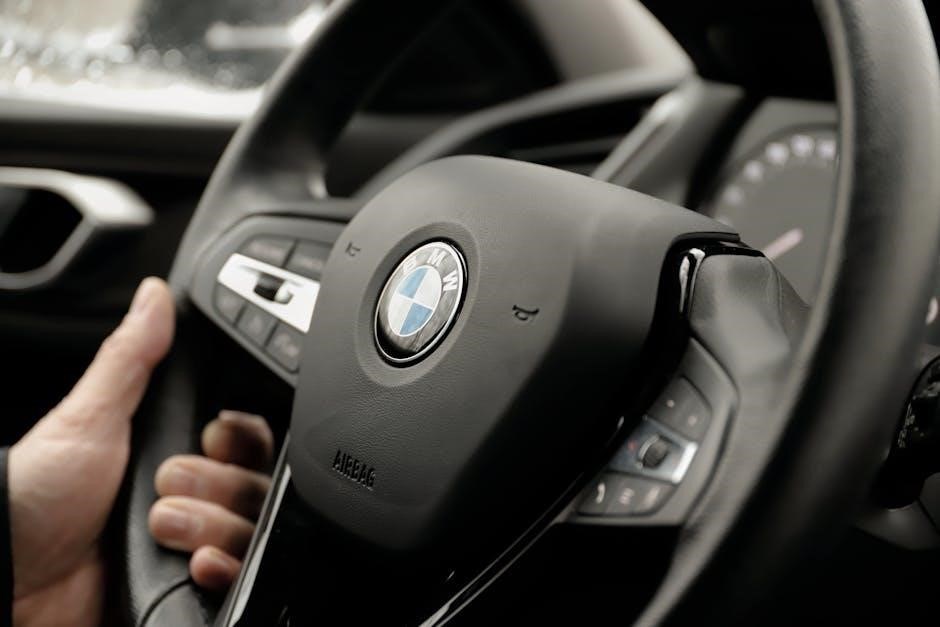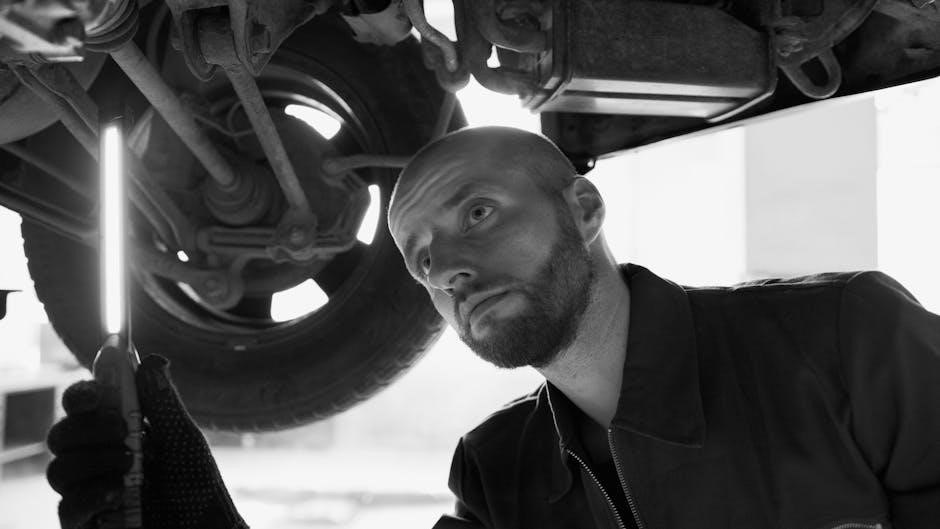Welcome to the world of child safety! Your Safety 1st car seat manual is your guide to securing your precious cargo. It provides essential instructions for correct usage and installation, which is key to keeping your little one safe.
Importance of Consulting the Manual
The Safety 1st car seat manual isn’t just a booklet; it’s your primary resource for understanding how to correctly use and install your car seat. Ignoring it could lead to improper installation, compromising your child’s safety. The manual offers step-by-step guidance specific to your model, ensuring a secure fit in your vehicle.
Inside, you’ll find critical information on weight and height limits, harness adjustments, and proper recline angles. It also details how to use LATCH connectors or seat belts correctly, a crucial aspect often overlooked. Consulting the manual helps you avoid common installation errors that could reduce the effectiveness of the car seat in a collision.
Furthermore, the manual covers essential maintenance and cleaning procedures, extending the lifespan of your car seat. Adhering to these guidelines ensures your child’s safety and peace of mind for you.

Finding Your Specific Safety 1st Manual
Locating the correct Safety 1st car seat manual is crucial. Begin by identifying your car seat model number. Check the Safety 1st website or online databases using this number to quickly find your manual.
Searching by Model Number
The most precise method for finding your Safety 1st car seat manual involves searching by the model number. This unique identifier ensures you access the correct documentation tailored to your specific car seat. Typically, the model number is located on a sticker affixed to the car seat itself. Common locations include the bottom of the seat, the back, or sometimes underneath the fabric cover.
Once you’ve located the model number, note it down. Visit the Safety 1st website and look for a support or manuals section. Enter the model number into the search bar. The correct manual should appear. Alternatively, general search engines can be used by typing “Safety 1st car seat manual” followed by the model number.
If you still have trouble, consider contacting Safety 1st customer support directly. They can assist in identifying the correct manual based on the model number. Having the model number ready ensures a quick and efficient search process.
Online Resources for Manual Retrieval
Beyond the official Safety 1st website, several online resources can assist in locating your car seat manual; Websites like Manua.ls offer a repository of manuals, where you can search by brand and model. These sites often host a variety of Safety 1st manuals, including those for popular models like the Ever Safe, Summit ISO 30, and Baladin.
General search engines, such as Google or Bing, are also valuable tools. Simply type “Safety 1st car seat manual” followed by the model name or a brief description of the seat. This can lead you to various sources, including PDF downloads on retailer websites or user forums where others may have uploaded the manual.
Remember to verify the source of the manual to ensure it’s legitimate and accurate. Look for official Safety 1st branding or cross-reference the information with other sources. These online resources make finding the right manual more accessible.

Key Sections within the Manual
The manual is your roadmap to safety! Essential sections cover installation (rear-facing and forward-facing), harness adjustments, and weight/height limits. Understanding these parts guarantees your child’s security and the car seat’s correct usage.
Installation Instructions (Rear-Facing)
Rear-facing installation is paramount for infants and young toddlers. Begin by consulting both your Safety 1st car seat manual and your vehicle’s owner’s manual. These resources contain vital instructions for your particular car seat model and vehicle type.
First, select an appropriate rear seat position. It is crucial to place it in the back seat of your vehicle, as this area is generally considered the safest for children. Ensure the vehicle seat is reclined to the correct angle, as specified in your car seat manual.
Next, route the vehicle’s seat belt or the LATCH connectors through the correct paths indicated in your manual. Tighten securely, ensuring minimal movement of the car seat. Use a leveling indicator, if present, to achieve the proper recline angle.
Double-check that the installation is snug and secure before placing your child in the seat. A properly installed rear-facing car seat significantly reduces the risk of injury in a crash.
Installation Instructions (Forward-Facing)
Once your child outgrows the rear-facing weight and height limits, transition to forward-facing. Again, consult your Safety 1st car seat manual and vehicle manual for precise instructions.
Position the car seat in a designated forward-facing seat in the vehicle, typically in the back. Thread the vehicle’s seat belt or LATCH connectors through the appropriate belt paths, as indicated in your manual. Ensure the seat is firmly placed against the vehicle seat.
Tighten the seat belt or LATCH straps securely, minimizing any slack. A top tether is essential for forward-facing installations. Locate the tether anchor point in your vehicle (refer to your vehicle’s manual) and attach the tether strap. Tighten the tether to further stabilize the car seat.
Verify the installation is rock solid – it should not move more than one inch side-to-side or front-to-back. A correctly installed forward-facing car seat with a tether provides optimal protection for your child.
Harness Adjustment and Fit
The harness system is crucial for your child’s safety. Correct harness adjustment ensures that your child is securely restrained in the car seat. Always refer to your Safety 1st car seat manual for specific instructions on harness adjustment.
Start by loosening the harness straps. Place your child in the car seat, ensuring their back is flat against the seat. The harness straps should be positioned at or just below your child’s shoulders when rear-facing, and at or just above when forward-facing.
Adjust the harness height accordingly. Buckle the harness and chest clip. The chest clip should be positioned at armpit level. Tighten the harness straps until you can no longer pinch any excess webbing at the shoulder.
Ensure the harness is snug but not too tight. You should be able to slide one finger between the harness strap and your child’s collarbone. Regularly check the harness fit as your child grows, readjusting as needed to maintain optimal safety.
Understanding Weight and Height Limits
Adhering to the weight and height limits of your Safety 1st car seat is paramount for your child’s safety. Exceeding these limits can compromise the car seat’s effectiveness in a crash. Consult your Safety 1st car seat manual for specific weight and height guidelines.
Each car seat model has different limits, so never assume they are the same. Weight limits typically range from 4 to 100 pounds, depending on the seat type and configuration (rear-facing, forward-facing, or booster). Height limits are also crucial, ensuring your child’s head is properly protected.
Regularly monitor your child’s weight and height to ensure they remain within the specified limits. Transitioning to the next stage of car seat (e.g., from rear-facing to forward-facing) should only occur when your child has outgrown the rear-facing limits. Similarly, move to a booster seat when your child exceeds the forward-facing limits.
Always prioritize safety over convenience and never rush to transition your child to the next stage before they are ready.

Safety Regulations and Guidelines
Safety regulations are paramount. Your Safety 1st car seat manual outlines these, ensuring compliance with standards. Knowing and following them reduces risks, and keeps children secure on every journey, giving you confidence.
Overview of Safety Standards
Understanding the safety standards outlined in your Safety 1st car seat manual is crucial for your child’s well-being. These standards are not arbitrary; they are the result of extensive research and testing to ensure maximum protection in the event of a collision. The manual details specific regulations, including those related to car seat construction, impact resistance, and harness systems.
Familiarize yourself with the federal motor vehicle safety standards (FMVSS) referenced in your manual, particularly FMVSS 213, which sets the performance requirements for child restraint systems. By understanding these standards, you gain insights into the rigorous testing your Safety 1st car seat has undergone.
Moreover, the manual highlights the importance of adhering to state and local laws regarding child passenger safety. These laws often specify age, weight, and height requirements for car seat usage. Staying informed about these regulations ensures you are providing the appropriate level of protection for your child as they grow. Compliance with these standards offers peace of mind, knowing you are providing optimal safety.

Troubleshooting Common Installation Issues
Having trouble installing your Safety 1st car seat? This section addresses common problems. Refer to your manual for detailed diagrams and instructions. Correct installation is key to your child’s safety.
Addressing Loose Installations
A loose car seat installation is a major safety concern. It significantly reduces the effectiveness of the car seat in a crash. If your Safety 1st car seat feels unstable, double-check the following:
First, ensure that you have correctly threaded the vehicle’s seat belt or LATCH straps through the appropriate slots on the car seat. Refer to your Safety 1st manual for specific diagrams.
Next, apply sufficient pressure while tightening the seat belt or LATCH connectors. Use your body weight to push down on the car seat as you tighten. The goal is to minimize movement – ideally, less than one inch of movement at the belt path when tested side to side or front to back.
Check that the recline angle is correct, especially for rear-facing installations, and that the tether (if used) is properly connected and tightened. If the issue persists, consult a certified Child Passenger Safety Technician for hands-on assistance. Your child’s safety depends on a secure fit!
Maintenance and Cleaning
Keeping your Safety 1st car seat clean and well-maintained is vital for both hygiene and longevity. Regular cleaning ensures comfort for your child and helps preserve the car seat’s integrity over time.
Cleaning Procedures for the Car Seat
Maintaining a clean car seat is essential for your child’s hygiene and the seat’s longevity. Before cleaning, always consult your Safety 1st manual for specific instructions, as cleaning methods can vary by model. Generally, you’ll want to start by removing any loose debris with a vacuum cleaner. For the fabric components, spot clean with a mild soap and water solution, avoiding harsh chemicals that can damage the material or pose a risk to your child.
Removable fabric covers can often be machine washed on a delicate cycle, but air drying is recommended to prevent shrinking. Plastic parts can be wiped down with a damp cloth and mild soap. Ensure all parts are completely dry before reassembling the car seat. Regularly inspect straps and buckles, cleaning them with a damp cloth to remove any dirt or spills. Never submerge the harness straps in water or use bleach, as this can weaken the fibers.
Remember to reassemble the car seat according to the manual’s instructions to ensure it remains safe and effective.
Contacting Safety 1st Support
Need assistance? Safety 1st offers various support channels to address your questions or concerns regarding your car seat. Consult your manual for specific contact information or visit their website for comprehensive support.
Accessing Customer Support Resources
Safety 1st understands that installing and using a car seat can sometimes be challenging. That’s why they provide various customer support resources to ensure your peace of mind. Start by thoroughly reviewing your car seat manual, as it contains detailed instructions and troubleshooting tips.
If you still have questions, the Safety 1st Support Center is a valuable online resource. It offers a hub of comprehensive information, including FAQs, how-to guides, and videos. You can also find contact information for reaching their customer service team directly.
Consider exploring online forums and communities where other Safety 1st users share their experiences and offer advice. Remember to always prioritize official Safety 1st resources for accurate and reliable information.
Don’t hesitate to reach out to Safety 1st customer support via phone or email if you require personalized assistance. They are dedicated to helping you ensure your child’s safety.
Ultimately, remember the importance of understanding the manual for optimal usage!
